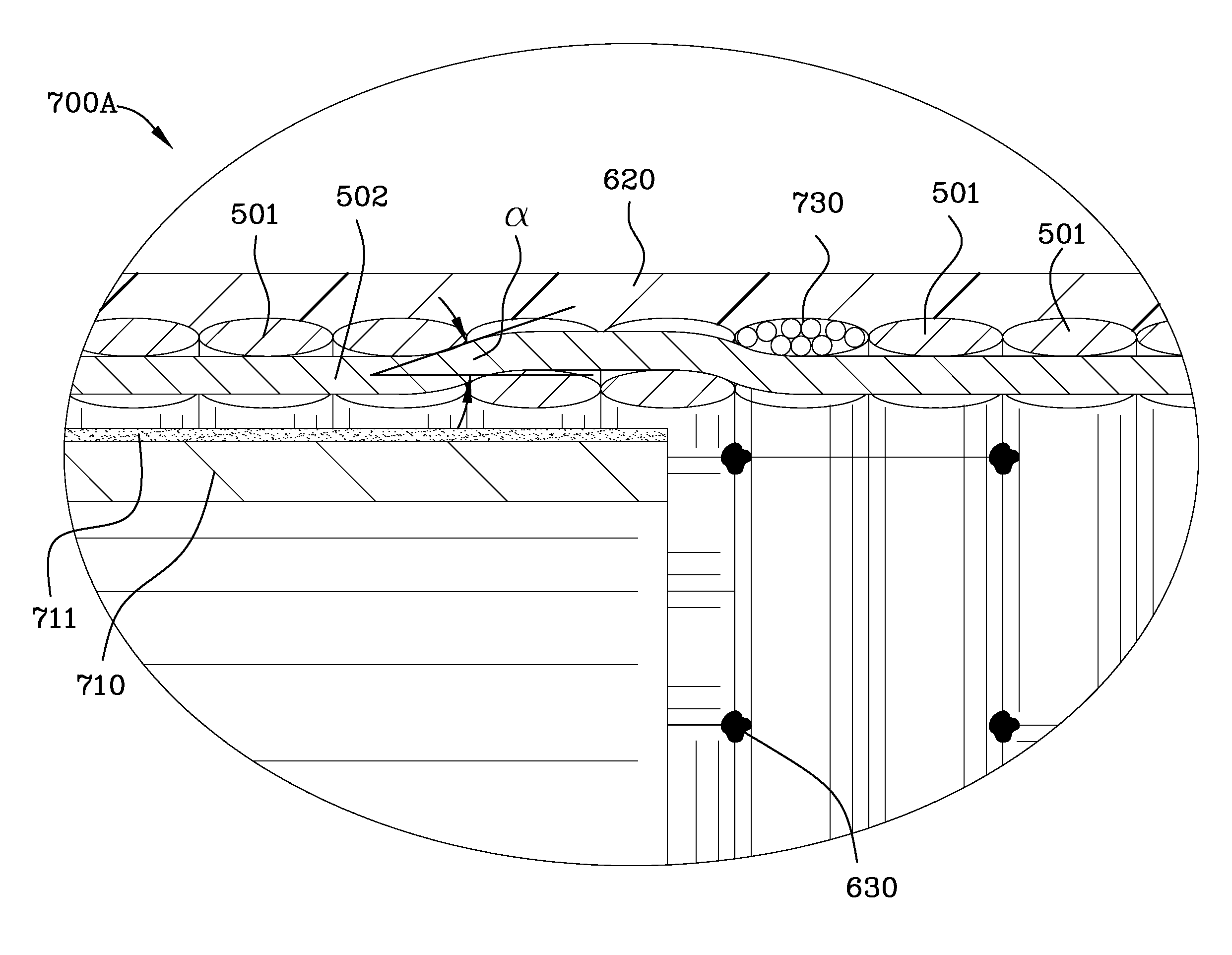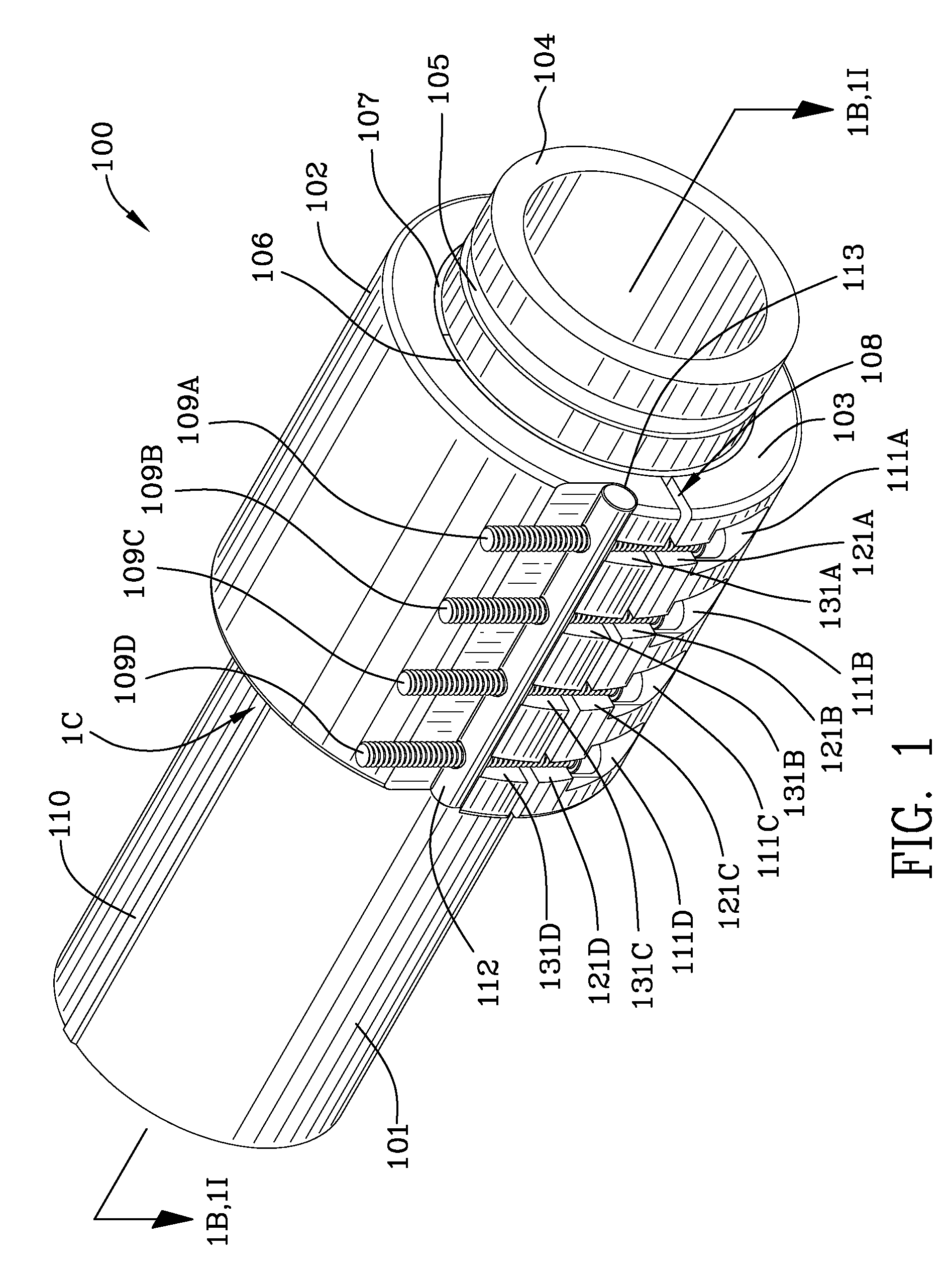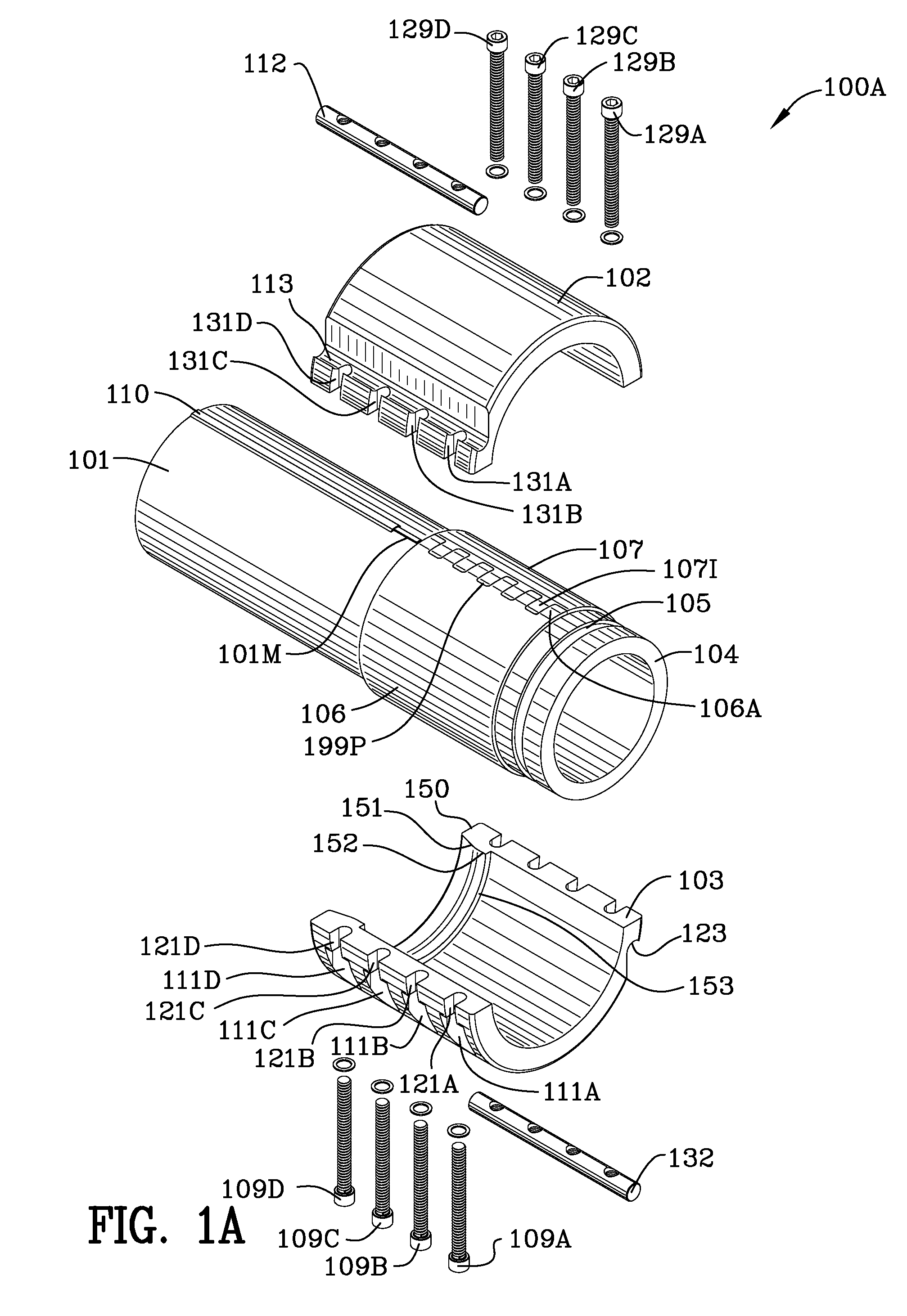Hose
a technology of hoses and hoses, applied in the direction of hose connections, other domestic objects, mechanical apparatus, etc., can solve the problems of fabric liner splitting, large stress applied to the hose at the pinch point of the coupling, and increase the demands of pumping equipment, etc., to achieve long distance transport of fluids and high pressure
- Summary
- Abstract
- Description
- Claims
- Application Information
AI Technical Summary
Benefits of technology
Problems solved by technology
Method used
Image
Examples
Embodiment Construction
[0058]FIG. 1 is a front perspective view 100 of the coupling, sleeve halves 106, 107, tailpiece 104, hose 101, and collar 102, 103. The collar is made of two halves, a first collar half 102 and a second collar half 103. The collar halves and tailpiece may be made of any conductive metal such as aluminum or other non-corroding metal. The sleeves 106, 107 may be made of nylon or non-corroding metal such as aluminum. A grounding conductor 101M is illustrated as being slightly raised from the hose surface. The grounding conductor 101M electrically communicates any electrical potential through the conductor as well as all metal components in communication with the conductor 101M such as the collar half 102, tailpiece 104 and sleeve half 106.
[0059]FIG. 1C is cross-sectional view 100C taken of the area denoted by reference numeral 1C in FIG. 1. The metal grounding conductor 101M is copper, aluminum or some other highly conductive metal and is illustrated in cross-section in engagement with...
PUM
 Login to View More
Login to View More Abstract
Description
Claims
Application Information
 Login to View More
Login to View More - R&D
- Intellectual Property
- Life Sciences
- Materials
- Tech Scout
- Unparalleled Data Quality
- Higher Quality Content
- 60% Fewer Hallucinations
Browse by: Latest US Patents, China's latest patents, Technical Efficacy Thesaurus, Application Domain, Technology Topic, Popular Technical Reports.
© 2025 PatSnap. All rights reserved.Legal|Privacy policy|Modern Slavery Act Transparency Statement|Sitemap|About US| Contact US: help@patsnap.com



